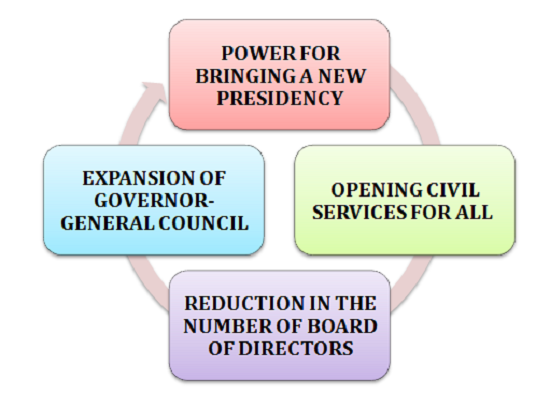

Britishers entered India in the year 1600 on August 24 in form of EIC. At the time when this charter was issued by the Queen of Great Britain (Elizabeth I), the Britishers achieved their rights of trading in India. EIC then also got the privilege and freedom over the money that can be earned in Bengal, Bihar, and Orissa. The Britishers started to rule the territories of India through the guidelines of this act.
The sepoy mutiny outbreak and EIC captured the power to govern the Indian government and forged direct obligation on them to control the common people of India. The Britishers then started to execute their power and rule India from that day until Independence Day in the year 1947. The administration of India was controlled and ruled by Britishers by these Charter Acts.
The main objective of the Charter Acts was to provide the Britishers or EIC with an exclusive license. The Charter Acts mainly enabled the Britishers or EIC to govern all the effective policies that were made in India. Indian administration that was controlled and governed by the Britishers was under a rule that EIC used to follow.
The rule highlights that this charter had to be revised every 20 years and all regulations and rules of how the Indian administration needs to be controlled must be included in the charter. The Charter Act started in the year 1773 and it continued till the year 1858. The Charter Act of 1853 was one of the most significant of all Charter Acts.
Some major provisions that were included under The Charter Act 1853 are stated below.

Figure 1: Provisions of the Charter Act of 1853
The council included 24 boards of directors that used to guide through all problems. This act of 1853 has the reduced number of BOD. The number of BOD reduced from 24 to 18 and then to 6 (Cornell et al. 2022). The number 6 was covered by the crown rule of EIC and all members are crown nominated by following all the guidelines of the Charter Act.
The act of 1853 also helped in bringing up the concept of different presidencies. The country of directors was usually authorized by this act of 1853 where a Lieutenant Governor (LG) was also appointed for Punjab a major state of India. The new president was initiated under the guidelines of this act in the year 1859.
The most notable aspect that is covered under the act of 1853 was the beginning of civil services in all states and territories of India under the rule of EIC or Britishers. The act included a rule of providing government jobs to the individual who will a recommendation from the board of directors or members of EIC. Civil services were also opened to all Indians after these guidelines were introduced under this act. This rule led to a competitive culture in India at that time.
The act highly emphasized the development of the office of the governor-general of India which was also under the execution of EIC’s rule. The council’s function then was separated into 2 major levels including the executive level and the legislative level. The council include 6 members in total and this number of members does not increase from 6 to 12.
Some common features of The Charter Act 1853 are mentioned below
The major act that was authorized under the EIC’s rule and regulation are The Charter Acts. This was established in the year 1773 that provided several effective guidelines to the Britishers to rule govern and control the Indian Administration
Some previous Charter Acts that were also established in India were in the years 1793, 1813 and 1833 which were renewed after 20 years.
This act was passed when Lord Dalhousie was the Indian governor-general
The British parliament passed this act of 1853 in order to renew the EIC’s charter.
The functions of the council of the governor-general got separated when this act passed. The major 2 functions include 2 different levels such as executive and legislative levels
The Charter Act of the year 1853 mainly severed as a modern parliament foundation during the period of British rule in India.
The Charter Act of 1853 was the most important of all Charter Acts and was the striking from the year 1773 to the year 1858. This act was formed according to the suggestions given by The Select Committee of Enquiry in the year 1852. The act includes the provincial representation concept that was under the Legislative Council. The act helps the EIC or the Britishers to execute their power over all territories of India till independence day (1947).
Q1. What was the main motive of The Charter Act of 1853?
The Charter Act of 1853 was established in the year 1852 according to the suggestion of The Select Committee of Enquiry. This act was established to provide guidelines to EIC on how to execute their power on Indian administration and rule the Indian territories.
Q2. What is the significance of the act of 1853?
The number of BOD was set based on the guidelines of this act during EIC’s rule. The number of BOD got decreased from 24 to 18 and then to 6. This act helps the Britishers to crown-nominate the members of BOD. The BOD elected 6 members that have never grown from 6 to 12 later.
Q3. What are the major provisions of The Charter Act of 1853?
The act helped in setting the appointment of a separate governor for Bengal presidency and distinct from the governor-general of India. Director’s courts and BOD were given the authority to appoint a lieutenant governor.